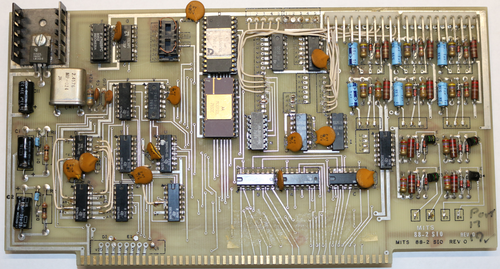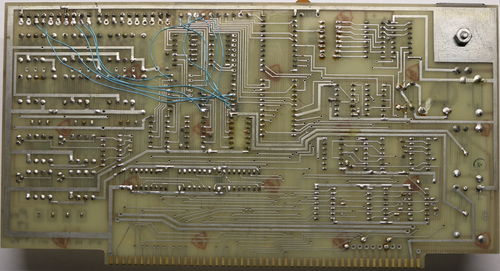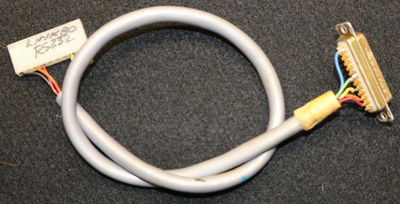Mits Altair 88-2 SIO Rev 0. Purchased on eBay 5/15/2015
Mits Altair 88-2 SIO Rev 0
I need to ascertain whether this is an A RS-232, B TTL levels or C current loop
--Jeffa (talk) 11:04, 19 May 2015 (CDT) I replaced the broken capacitor. Placed the 88-2 SIO in my Imsai test system. Survey.com reports I/O ports 10, 11, 12 and 13 hexadecimal which relates to markings on board Port 17 19 assumed in octal. Status then data ports hence the odd numbers. Guess I'll break out the oscilloscope to verify it's RS-232 rather than current loop or TTL levels.
5/19/2015 From Mike Douglas (check out his Altair site and products at deramp.com)
The 88-2SIO did not have an A, B, or C versions of the board like the original 88-SIO board. Instead, the 2SIO could do RS232, current loop, or TTL on the same board depending on the wire jumpers the end user installed. And as you can tell, there can be alot of wire jumpers.
Looks like the owner strapped port zero options with white wires on the front of the board, and strapped port one options with blue wires on the back of the board. Both appear to be wired for RS232 options.
Port 0 is running `at 9600 baud, so it's probably ready to connect to a terminal. Port 1 is set for 300 baud and was probably used with a modem. If you have both DB-25 cables, I imagine one is wired as DCE for connection to a terminal, and the other is wired as DTE for connection to a modem.
Ignore the MITS recommended for the cable that runs from the 10 pin connector to the DB-25, it's wrong for both DCE and DTE.
Looks like the guy who wired your boards also wired CTS, RTS, and DCD from the 6850's. For simple 3-wire operation, you'll want to tie CTS and DCD to ground (if done on the 6850 side of the 1489) or to +5 or +12 on the DB-25 side of the 1489.


